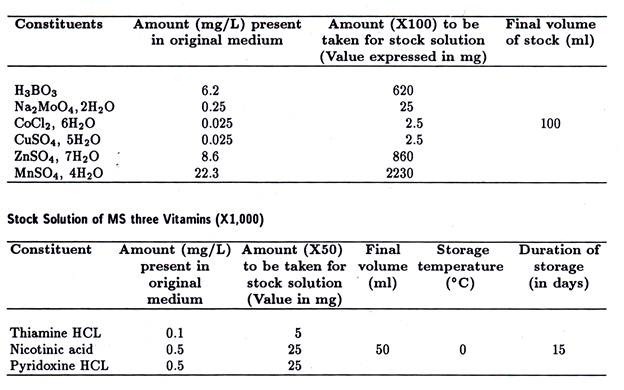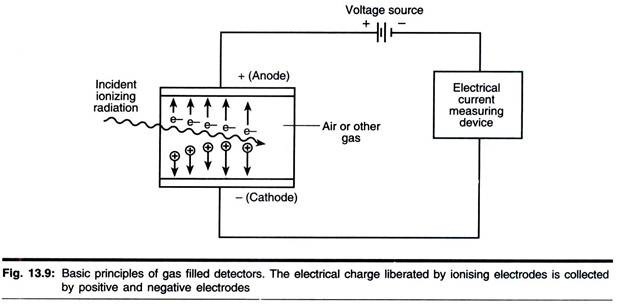ADVERTISEMENTS:
In this article we will discuss about the mechanisms of regulation of transcription in higher eukaryotes.
In E. coli, the RNA polymerase holoenzyme (with sigma factor) contains all the information needed to accurately initiate transcription given proper promoter signals (-35 recognition sequence plus -10 Pribnow box). However, RNA polymerase II of eukaryotes, which transcribes most of the protein- encoding nuclear genes, cannot initiate transcription accurately in vitro without the addition of four accessory proteins or general transcription factors.
The requirement for these transcription factors (Fig. 5.5) provides the potential for additional sites of regulation of transcription. Whether these proteins interact with other transcription factors in a regulatory fashion or whether they are totally autonomous factors remains to be determined. In either case, they yield a slightly more complex picture of the initiation of transcription in eukaryotes.
Most Eukaryotic Transcription Units are Monogenic:
At present, our knowledge about the mechanisms by which gene expression is regulated in eukaryotes is expanding rapidly. We know that different sets of genes are transcribed in different cell types in higher eukaryotes, and we know that the different patterns of gene expression in different tissues are controlled by transacting proteins encoded by regulatory genes that act in sequence during differentiation.
Clearly, regulatory mechanisms acting at the level of transcription are important in cell differentiation. However, the molecular details of these regulatory mechanisms are still being worked out, and many important questions about differentiation promise to challenge geneticists for years to come.
In higher eukaryotes, it does seem very clear that operons are not important, if they exist at all. Although there is evidence for operons or operon like units in the lower eukaryotes (e.g., fungi), operons appear to be rare or non-existent in higher eukaryotes.
ADVERTISEMENTS:
Most of the mRNAs of higher eukaryotes characterized to date are monogenic (contain the coding sequence of one structural gene). In a few cases, the primary transcripts are polygenic and are cleaved to produce monogenic mRNAs.
Enhancers and Silencers Modulate Transcription in Eukaryotes:
Eukaryotic genes are regulated by promoter elements located just upstream (5′) from the transcription-initiation sites in a manner quite similar to the regulation of prokaryotic genes. However, as in the case of the Drosophila Ubx gene, these eukaryotic promoters may be very complex with binding sites for many different regulatory proteins.
In addition to the nearby promoters, many eukaryotic genes are also regulated by more distant cis-acting elements called enhancers and silencers. As the names suggest, enhancers increase transcription and silencers decrease transcription of the regulated genes. Since enhancers appear to be more common and are much better understood, the following discussion will focus on the properties of enhancer elements.
The basic features of enhancers that distinguish them from promoters are as follows:
1. Enhancers can act over relatively large distances:
Up to several thousand nucleotide-pairs from the regulated gene(s).
2. Enhancers are orientation independent:
They function equally well in either orientation, normal or inverted (turned end-for-end).
ADVERTISEMENTS:
3. Enhancers are position independent:
they function equally well whether located upstream (5′) from a gene, downstream (3′) from a gene, or present within an intron of a gene.
Enhancers are relatively large elements, up to several hundred nucleotide-pairs in length. They sometimes contain repeated sequences that have partial enhancer activity by themselves. Most enhancer elements function in a complete or partially tissue-specific manner, that is, they frequently will only enhance the transcription of genes in specific target tissues (those tissues where the gene- product is needed).
The most extensively studied enhancer is that present on the mini-chromosome of simian virus 40 (SV40), a virus of monkeys that can be investigated in cell cultures. The complete SV40 enhancer is about 220 pairs in length (Fig. 5.6).
ADVERTISEMENTS:
This region of the SV40 mini-chromosome is not packaged into nucleosomes (Fig. 5.6a). Presumably, the SV40 enhancer is covered with protein transcription factors that prevent it from becoming wrapped into nucleosomes by the histones.
The SV40 enhancer contains two 72- nucleotide-pair direct repeats, and deletion of both repeats eliminates enhancer activity. If one of the direct repeats is deleted, the enhancer is still functional. Early experiments demonstrated that the SV40 enhancer could be moved to any other location on the SV40 mini-chromosome without loss of activity.
Moreover, it could be excised from the SV40 chromosome and reinserted in the inverse orientation without loss of function. These early studies established the orientation and positional-independent nature of enhancer action. Finally, when the SV40 enhancer was placed on either side of any of several different eukaryotic genes (e.g., the human β-globingene), it sharply increased the rate of transcription from these genes.
In vivo, the insertion of an SV40 enhancer within a few thousand nucleotide-pairs of a structural gene can increase the rate of transcription by as much as 100-fold.
ADVERTISEMENTS:
Many enhancers have now been characterized that play key roles in the regulation of gene expression. A striking feature of the characterized enhancers is that they exhibit tissue specificity. The enhancer that regulates immunoglobulin heavy-chain synthesis is described. This enhancer is located within an intron of the complex heavy-chain genes.
ADVERTISEMENTS:
In the chicken genome, an enhancer is located between the β-hemoglobin gene and the e- hemoglobin gene; it stimulates transcription of the ε-globin gene during embryonic development and of the β-globin gene in adults. The tissue specificity of the enhancers is fascinating; however, we do not understand the molecular basis of this specificity.
Presumably, the tissue specificity must result from interactions of enhancer sequences with transcriptional activators present only in cells in which a given set of genes is expressed. This, of course, raises another question; What controls the tissue-specific expression of these transcriptional activators?
The ability of enhancers and silencers to act at a distance of 1,000 nucleotide-pairs or more is intriguing. By what mechanism can these cis-acting regulators influence transcription from promoters that may be more than a kilobase away? We do not know the answer to this question in any detail. However, one point is very clear.
The factors bound at the enhancer sequence and the promoter sequence can act in a cooperative manner, either positively or negatively. This indicates that these proteins are probably in contact, at least some of the time, and suggests that the intervening DNA folds or bends to permit this contact (Fig. 5.7). Models of enhancer and silencer action thus resemble the mechanism of regulation of the ara operon in E. coli, except that many more regulatory proteins appear to be involved in higher eukaryotes.
For example, in the case of the chicken β- hemoglobin gene, evidence is available that implicates the binding of at least 5 different proteins to the promoter and at least 5 different proteins to the enhancer. Since 2 of the same transcription factors bind to both elements, promoter and enhancer, the data available indicate that at least 8 different proteins participate in regulating transcription of the chicken β-globin gene.
Obviously, regulation of transcription in higher eukaryotes is complex. Clearly, much work will be required to sort out the specific function(s) of each of these trans-acting transcriptional regulators.
ADVERTISEMENTS:



